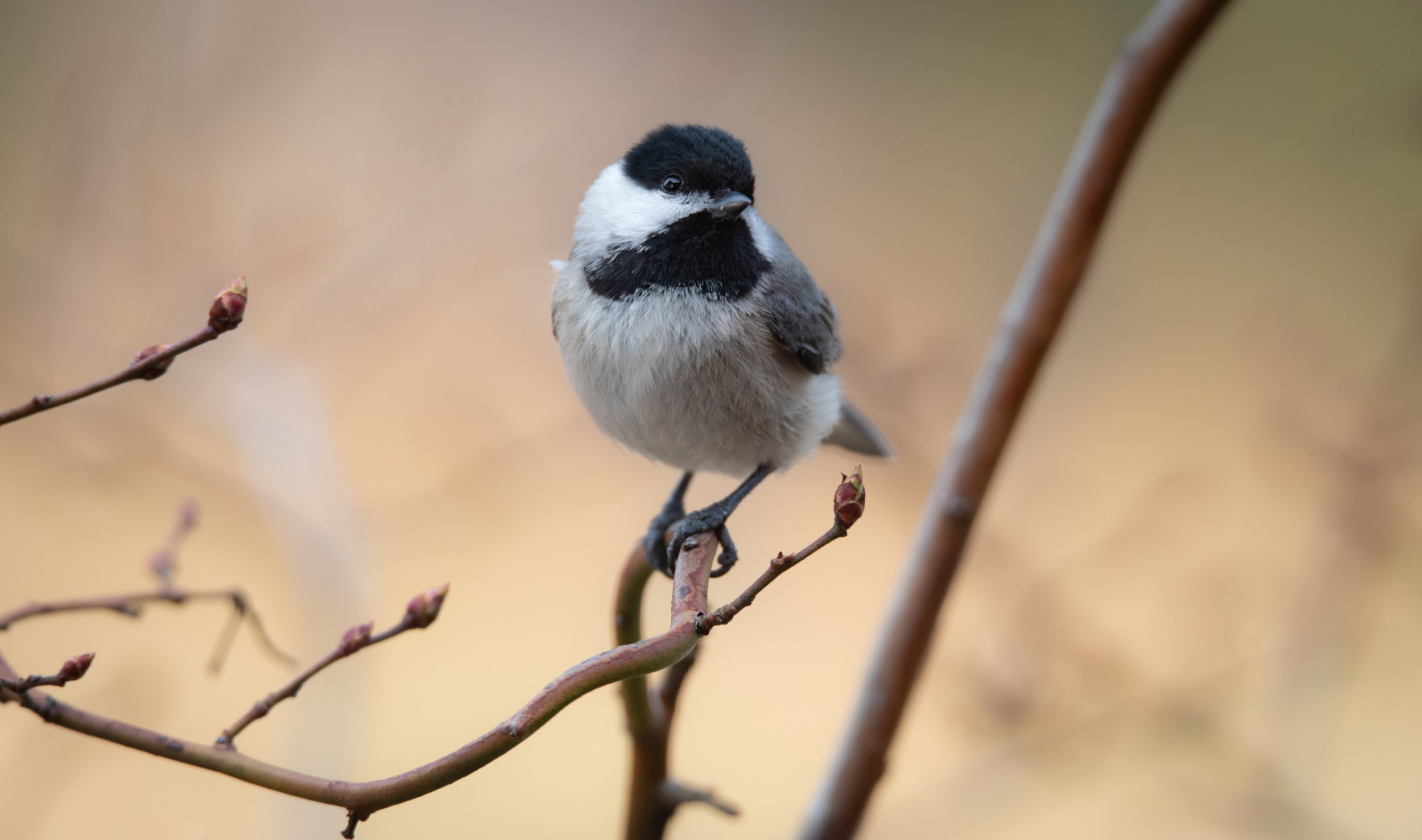This past weekend, I returned to Snow Bunting Peninsula on Old Hickory Lake. This location can be mixed bag, and you never know what you will see. For me, that is what makes this spot worth the drive. On this visit, I was greeted by at least 50 Ring-billed Gulls that were meandering around the area as I was driving in. I was also keeping an eye out for the Purple Sandpiper to see if it was still there, which it was, busily probing the grasses on the bank for food. Amongst the gulls there were also several American Coots bobbing about. Almost immediately, something else caught my attention. In some dormant aquatic vegetation, amongst several American Coots, I saw a small brown duck. What really captured my attention was the fact that I didn’t have a clue what it was!
I’ll be the first to admit, my knowledge of waterfowl leaves a lot to be desired. Anything beyond a Mallard, Wood Duck or Canada Goose, and chances are I’m going to be needing to consult my field guide. (A Peterson Field Guide, for anybody curious) The only problem was, on this trip, I had forgotten it! This left me in the position of getting to practice what we frequently preach at the shop…. Identification through observation. Not only what does the bird look like; what is it doing? This is where, and we cannot stress this enough, have your binoculars with you! They truly make all the difference in the world. You likely paid for this tool, so get your moneys worth out of them and use them! Observing the birds behavior can help you to narrow the field of possible species down to a much less daunting number. As I stared at the mystery duck, it suddenly tucked itself and dove underwater, staying completely submerged for a good 15 seconds before reappearing a short distance away. This was the behavioral factor I needed to aid in narrowing the field. As I did not have my field guide, I used my phone to search for “diving ducks” of Tennessee. This helped to eliminate numerous possible duck species, as many species will not fully dive underwater. From this reduced group of ducks, I was then able to use the birds appearance, (size, coloration) the habitat I saw it in, (a large body of water, diving in aquatic plants close to shore) and the time of year (late January) to reach a positive ID. This is a much more efficient method for finding a bird than simply scanning through dozens of species looking for one that looks right. So, what was this mystery bird, then? A female, or immature male Ruddy Duck.
I will link to the Cornell Lab of Ornithology page on the Ruddy Duck here for those of you who want to take a deep dive on this species, but in short, Ruddy Ducks can be a fairly common find during the winter months on Middle Tennessee’s bodies of water. They lay the largest eggs relative to their size of any species of duck. They dive down to the bottom in search of food, typically small invertebrates, but sometimes plant material. The specimens I observed, as you can see, are fairly unassuming in terms of coloration. However, this is only because I didn’t get to observe any males in their breeding plumage! Breeding males are quite the handsome bird, with a rich glossy brown body, striking black and white head, and an almost garish light blue bill.
Ruddy Duck
Photo Credit: Eli Haislip
Switching to Safflower
This week, we’ve been hearing reports of increased Grackle and Starling activity at bird feeders. While this is not uncommon for this time of year, it can be frustrating as these larger birds will often feed in groups, crowding feeders and not allowing smaller songbirds a chance to feed. Fortunately though, there is a simple and effective solution. Switching to Safflower seed is the easiest way to deter Grackles, Starlings, and for most of the year, even squirrels! While these birds struggle to crack the hard and oddly shaped shell, all of your common feeder birds won’t. Cardinals, Chickadees, Titmice, and Nuthatch all will happily feed on safflower, so a temporary switch of a few weeks or perhaps months won’t cause you to miss out on your backyard favorites. Safflower is available in 50, 20, and 8 pound bags and before tax costs $75, $36, and $16.50 respectively.







